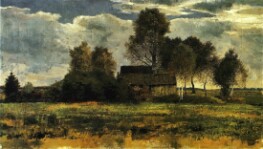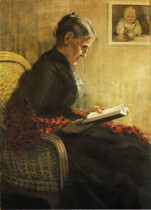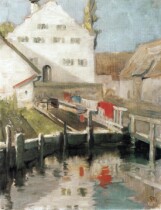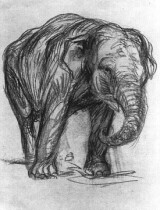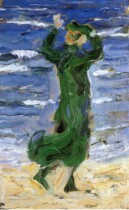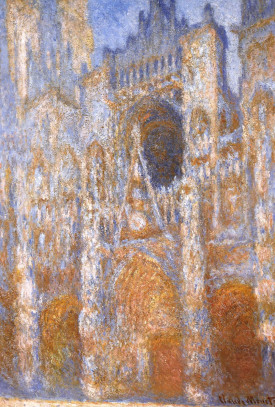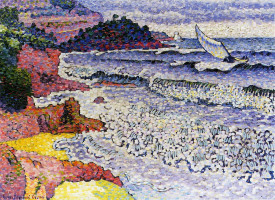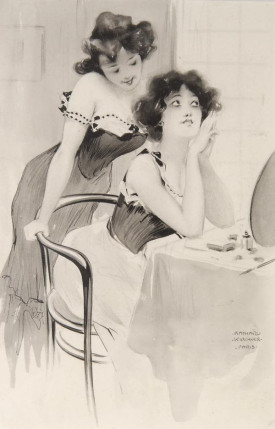The Tower of Blue Horses
The Tower of Blue Horses is equally known for its aesthetic and artistic significance, and for its fascinating history. The large canvas (200x130cm) is representative of the height of Marc’s artistic achievement. Marc’s preparatory work is visible in The Tower of Blue Horses (1912). The artist sent this ink and gouache sketch on a postcard to the German Jewish poet Else Lasker-Schüler, who was one of the few women affiliated with the Expressionist movement.
The artist created a tight composition, in which all of the elements move upward. This vertical motion is mainly established through color. In essence, the bottom of the painting is a deeply saturated blue that gradually transitions to light yellow and orange tones in the rainbow on the top. Like in other artworks, Marc applied his theory of color symbolism to the painting. The blue symbolized the male principle, severe and spiritual, and the yellow marked the female principle, gentle, cheerful, and sensual. The blue and red in the bottom created a high intensity, which needed to be broken up with the softness of the yellow. Besides, orange and blue are complementary colors, and in Marc’s color theory, this combination was harmonious and celebratory. Like the title suggests, the composition can be interpreted as a cluster of horses. The four horses possibly signify the Four Horsemen of the Apocalypse, which relate to the atmosphere and tension before World War I. At the same time, given Marc’s interest in Futurist art, this could be an interpretation of how Futurist painters, like Giacomo Balla, represented a movement in paintings like Dynamism of a Dog on a Leash (1912). If so, the tower of horses would be a rhythmical repetition of the successive movement of a single horse.
In the fall of 1913, the painting was exhibited in the First German Autumn Salon in Berlin. The exhibition was modeled after the French Salon d’Automne (Autumn Salon) and was the largest and most significant exhibition held in Germany before World War I. After World War I, the painting was acquired for the contemporary section of the National Gallery in Berlin. In 1937, the German Nazi Party launched its campaign against modern art and began confiscating artworks that they considered ‘degenerate’ from museums and galleries. The painting was included in the Degenerate Art exhibition that opened in July 1937 in Munich. This decision caused considerable controversy since Marc was killed while serving Germany during World War I. After a protest by the association of German officers, the painting was removed from the Berlin opening.
For a while, the artwork was owned by Herman Goering, the commander of the German Luftwaffe, and one of the most influential members of the Nazi Party. Goering used his position to select his favorite pieces from the confiscated and looted artworks for his private collection, which also contained two other works by Marc. Various accounts claimed that the painting was almost destroyed and then saved on multiple occasions; however, after 1945, it vanished without a trace. Throughout the years, there were several reported sightings and speculations regarding the painting’s whereabouts. Still, no official record of The Tower of Blue Horses exists after 1945.


